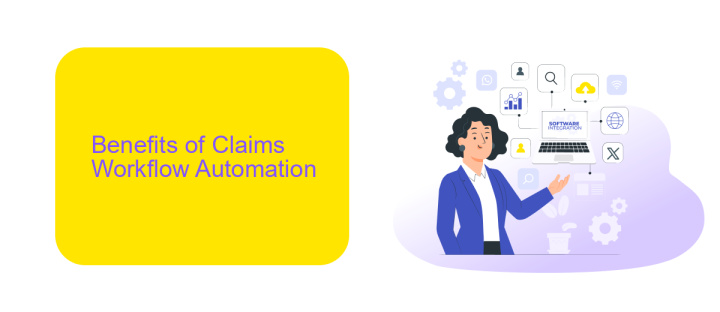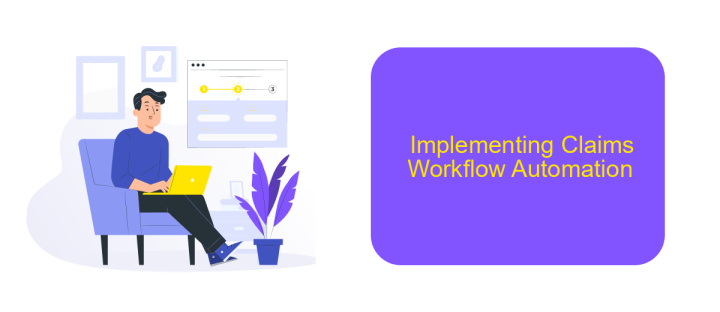Claims Workflow Automation
In today's fast-paced business environment, the automation of claims workflows has become essential for enhancing efficiency and accuracy. By leveraging advanced technologies, organizations can streamline their claims processing, reduce manual errors, and accelerate decision-making. This article explores the key benefits and implementation strategies of claims workflow automation, highlighting its impact on operational performance and customer satisfaction.
Introduction to Claims Workflow Automation
Claims Workflow Automation is revolutionizing the insurance industry by streamlining the process of handling claims. By automating repetitive tasks and reducing human error, companies can significantly improve efficiency and customer satisfaction. This approach leverages advanced technologies such as artificial intelligence, machine learning, and robotic process automation to manage claims from start to finish.
- Reduces processing time and operational costs
- Improves accuracy and reduces human error
- Enhances customer experience with faster resolutions
- Facilitates better data management and reporting
Integration services like ApiX-Drive play a crucial role in Claims Workflow Automation by connecting various systems and applications seamlessly. ApiX-Drive allows insurers to automate data transfer between platforms, ensuring that all relevant information is up-to-date and accessible. This not only helps in speeding up the claims process but also in maintaining data integrity and compliance with industry regulations.
Benefits of Claims Workflow Automation

Claims workflow automation significantly enhances efficiency by streamlining the entire claims process. By automating repetitive tasks, such as data entry and document management, companies can reduce the time and effort required to process claims. This not only accelerates claim resolution but also minimizes human errors, leading to more accurate and reliable outcomes. Furthermore, automation enables better tracking and monitoring of claims, providing real-time updates and insights that help in making informed decisions swiftly.
Another notable benefit is the seamless integration with other systems and services, which can be facilitated by platforms like ApiX-Drive. ApiX-Drive allows for easy setup and management of integrations, ensuring that data flows smoothly between different applications. This connectivity ensures that all relevant information is readily available, reducing delays and improving overall customer satisfaction. By leveraging claims workflow automation, businesses can achieve greater operational efficiency, enhanced accuracy, and improved customer experiences.
How Claims Workflow Automation Works

Claims workflow automation streamlines the process of handling insurance claims by leveraging advanced technology to reduce manual intervention. This automation ensures that each step in the claims process is executed efficiently and accurately, leading to faster resolutions and improved customer satisfaction.
- Data Collection: The system automatically gathers relevant data from various sources, including policy details, customer information, and incident reports.
- Validation: The collected data is then validated against predefined rules and criteria to ensure accuracy and completeness.
- Assignment: Validated claims are assigned to the appropriate adjusters or departments based on the nature and complexity of the claim.
- Processing: The claim is processed through automated workflows that handle tasks such as documentation, communication, and approvals.
- Resolution: The claim is resolved, and the outcome is communicated to the customer, with payments or settlements processed as necessary.
To enhance the efficiency of claims workflow automation, integrating various systems and services is crucial. Tools like ApiX-Drive facilitate seamless integration between different platforms, ensuring that data flows smoothly and processes are synchronized. This integration minimizes errors and accelerates the overall claims handling process, providing a more streamlined experience for both insurers and customers.
Implementing Claims Workflow Automation

Implementing claims workflow automation requires a well-structured approach to ensure seamless integration and efficiency. The first step is to analyze the current claims process to identify bottlenecks and areas where automation can provide the most benefit. This analysis will guide the selection of appropriate tools and technologies for the automation process.
Once the analysis is complete, the next step is to choose a reliable automation platform. ApiX-Drive is an excellent choice for integrating various applications and services, allowing data to flow smoothly between systems. Setting up ApiX-Drive is straightforward, and it offers extensive documentation and support to help with the integration process.
- Analyze current claims process
- Select appropriate automation tools
- Integrate systems using ApiX-Drive
- Test and refine the automated workflow
After implementing the automation, it is crucial to continuously monitor and refine the system. Regular evaluations will help identify any issues and areas for improvement, ensuring that the claims workflow remains efficient and effective over time. This ongoing process will maximize the benefits of automation, leading to faster and more accurate claims processing.
Conclusion: The Future of Claims Workflow Automation
The future of claims workflow automation is set to revolutionize the insurance industry by enhancing efficiency, reducing errors, and improving customer satisfaction. As technology continues to advance, we can expect more sophisticated tools and platforms that leverage artificial intelligence and machine learning to streamline the claims process. These innovations will enable insurers to process claims faster and more accurately, ultimately leading to quicker settlements and happier clients.
One of the key components in this evolving landscape is the integration of various systems and services. Tools like ApiX-Drive are crucial in facilitating seamless data exchange between different platforms, ensuring that all relevant information is accessible and up-to-date. By automating these integrations, insurers can eliminate manual data entry and reduce the risk of human error. As a result, the entire claims workflow becomes more efficient, allowing companies to focus on delivering exceptional service and adapting to the ever-changing demands of the market.
- Automate the work of an online store or landing
- Empower through integration
- Don't spend money on programmers and integrators
- Save time by automating routine tasks
FAQ
What is Claims Workflow Automation?
How can Claims Workflow Automation improve efficiency?
What types of claims can be automated?
How can I integrate Claims Workflow Automation into my existing systems?
Is it secure to automate claims workflows?
Do you want to achieve your goals in business, career and life faster and better? Do it with ApiX-Drive – a tool that will remove a significant part of the routine from workflows and free up additional time to achieve your goals. Test the capabilities of Apix-Drive for free – see for yourself the effectiveness of the tool.


